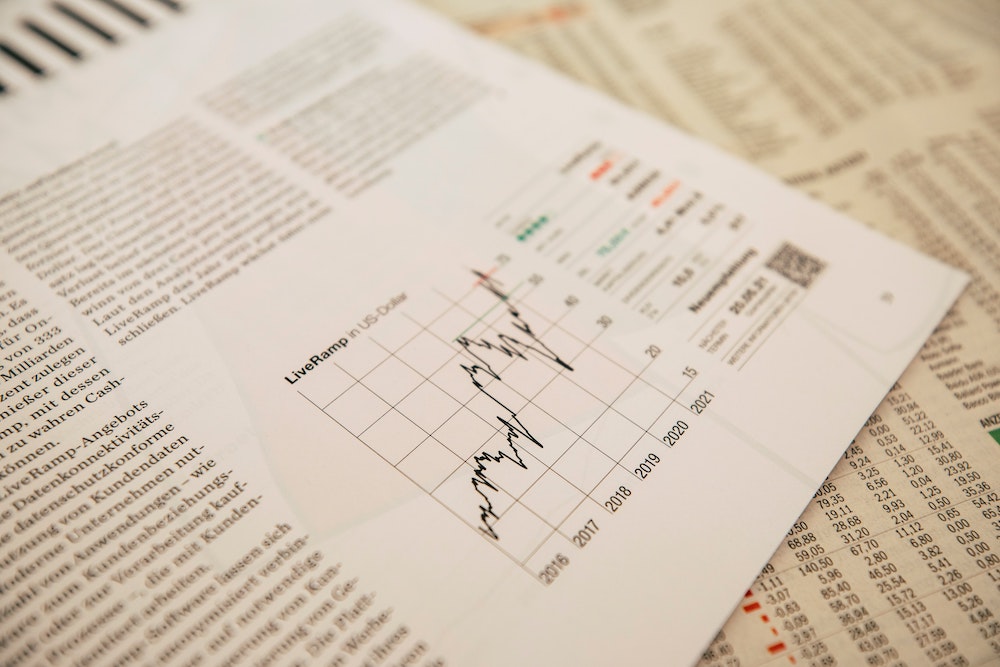A guide to primary vs secondary market research: the differences and how to conduct them

What's the difference between primary vs secondary market research? Save your budget from inaccurate data using the best market research strategies.
It’s time to freshen up your research skills, marketers. Before you dive head first into another market research project for a new product, campaign or even an entirely new business, let’s set the record straight on how to do it the right way—so your decisions are all the more well-informed.
Because market research comes with a long list of benefits—but only if you conduct it correctly. One wrong assumption or step skipped in your process could clutter or blur the data you’ll be using to base very important decisions on.
If you do get it right, you’ll end up with information that helps you perfect your product and marketing, that convinces investors to bet their money on you and that shapes your business to be successful. And that’s what we’re going for.
So in this article, we’ll explain how you use primary and secondary market research. We’ll give it a clear definition, lay out how to do it, and we’ll point out some things to be careful of.
Ready? Set… Research!

Primary vs secondary market research: what’s the difference?
Primary and secondary research is defined by the source and who collects the information. Primary research is new research you conduct yourself and data is collected right from the source, which is often consumers. Many brands use market research services or tools to gather their insights. For secondary market research you use insights conducted by others, like governments.
Primary research might be done by someone else and you might use it later on for your own insight, turning it into secondary research.
Both primary research and secondary research can be qualitative or quantitative, and you can mix and match both to complete your research. In fact, this is often recommended, because it also allows you to compare your findings to what you read in secondary research, and it avoids double work—but more on that later.
| Comparison: Primary vs secondary market research | Primary research | Secondary research |
| Source of data | Directly from consumers, suppliers, or market participants | Existing studies, reports, or public data |
| Data collection | You conduct it yourself or hire someone to do it for you | You collect data others have already gathered |
| Relevance | Highly specific to your research questions | May not be perfectly aligned with your needs |
| Timeliness | Up-to-date, reflects current market conditions | May be outdated depending on publication date |
| Cost | Typically higher cost (time and money) | Generally lower cost or free |
| Control | Full control over methodology and questions | No control over how data was collected |
| Examples | Surveys, interviews, focus groups, observations | Government reports, published studies, books |
Primary market research
Primary market research is research you carry out yourself and gather from the source of information, like consumers, sellers, suppliers or anyone else in the market. You—or your internal or external research team—collect data from these sources directly. You get raw data and interpret this yourself, and it will be collected specifically for your research needs.
Benefits of primary research
There are three key benefits of conducting primary research:
- Primary research is the most relevant: if you have a super-specific question about how consumers in a specific segment shop for your product category, you’d be very lucky to find the answers in someone else’s research. With primary research, you determine which questions are asked and to whom, so it is incredibly relevant for your research goals.
- Primary research is up-to-date: a lot of markets are changing faster than ever, and trends come and go (thanks, TikTok). Primary research allows you to do research in a moment that matters to you. Especially in this AI-accelerated economy, consumer behaviors can shift dramatically in just months, if not weeks. What was true about digital adoption or shopping preferences in 2023 might be completely different by 2025. Conducting your own primary research, in a timely and ideally continuous way, avoids pitfalls like this.
- Primary research gives you more ownership and control over data: can you trust a source? That’s always the question when using secondary research. With primary research, you have full transparency on how it was collected and you can make decisions based on it with confidence.
How to conduct primary market research
So, what’s the best way to collect data straight from the source, whether you’re brand tracking or copy testing? There are several ways to go about this. You can mix and match the primary research methods below to gather data for your particular research project.
Surveys
Probably the most used primary research method in market research is surveys. Nowadays, that’s mostly online surveys, but anyone who studied marketing before 2010 likely still remembers having to conduct surveys on paper in their local supermarket for a project.
The benefit of surveys, especially online, is that they are a relative low-cost method to reach a lot of people. And with platforms like Attest, you can also reach specific target audiences, all around the world—something that’d be really expensive and time-consuming without the internet.
Observation
How do people move in a shopping mall, or around a website? With observation, you can map out your target market behaviours and patterns that are harder to capture in surveys—because often people aren’t even aware of what they habitually do. Later on, you can supplement this information with surveys or information to put their behaviours into context.
Good market research is best used alongside other data and insights, to make sure you get a comprehensive picture of your consumers and market.
Experiments
Another great way to gather information on behaviours is by conducting experiments. In the marketing world this is often done to determine what the right pricing strategy is.
Interviews
Sometimes you might need super specific insights from your target customers and surveys just won’t give you the personal detail you need, and perhaps you have a lot of follow-up questions. Interviews with individuals should help you with this.
In this case, it’s all the more important that you select the right people to talk to, because conducting and analysing interviews is a time-consuming and costly process.

Focus groups
From a focus group, you can get similar information that you’d get from interviews, but you might get something extra out of thanks to the interaction between small groups of participants. Again, it’s crucial that you carefully pick the people that will take part in this method.
Secondary market research
Secondary research, also called desk research—because you can do it from your desk—is using research conducted by someone else.
You’ll be using data which can come from a wide variety of sources—which makes it all the more important that you thoroughly vet those sources.
Benefits of secondary research
- Secondary research is great for exploratory research: A big benefit of secondary research is that you can use it in the early stages of your research to test certain assumptions and hypotheses, before you invest time and money in using primary research methods to complete the research. You can use data that already exists to close the gaps in knowledge and determine the direction of your research.
- Secondary research can be more cost-effective: A Google search is free! Of course, you might stumble upon some reports or research that comes with a paywall, but often this is still a lot cheaper than having to conduct your own research (bear in mind though that because it’s not your own original research, it might not answer the specific queries you have at that time).
- You have access to a world of information: If you know where to look and what keywords to use, you’ll be able to do a substantial part of your research using only data that’s already in the public domain. We’ll list some sources that we recommend using below, to give you a head start. Bookmark them for easy access!
- You can save time on your primary research: It’s likely that a lot of information you’re looking for is already available and you might not need to ask your respondents unnecessary questions. At the same time, this will prevent you from duplicating information. Be careful to not use data too loosely though: make sure it is relevant and recent—otherwise it might still be wiser to do your own research.
- Secondary research is easy to conduct: It’s literally called desk research—so you won’t have to go anywhere, or hire someone else to do it. Secondary research comes with a warning sign though—don’t think it’s easy to find information and to interpret it the right way. At the end of the day, you are using data that was collected for a different purpose than your own, so you will always need to put it into perspective.
How to conduct secondary research
What are some good places to go hunt for data when conducting secondary research? Of course, that depends on your market and research goals. We’ll list some good sources below to help you get started.
Research databases
If you’re using a regular search engine, you can find all kinds of articles that are presented as research, but ultimately aren’t. If you’re looking for more high-quality information with a little more background on how the research was conducted, we recommend research databases such as:
- Google Scholar
- Science.gov
- ResearchGate
Using AI for secondary market research
The challenge isn’t just finding secondary data but processing the vast amounts available. AI-powered research assistants can now scan, analyze, and synthesize information from thousands of sources simultaneously.
Tools like ChatGPT’s Deep Research can generate comprehensive, fully-cited reports that connect insights across disparate sources, helping researchers identify non-obvious connections and trends.
This significantly reduces the time spent on data collection and initial analysis, allowing researchers to focus on interpreting findings and developing strategic recommendations. Just make sure to check it’s accuracy—just like humans, it can make mistakes.
Other handy sources
You don’t necessarily have to comb through scientific papers to find valuable information for your market research. These sites give you great bite-sized data that’s easy tounderstand:
- Google Trends
- Statista
- McKinsey

Government reports
Governments are prominent market research users. After all, governments need to know what’s really happening in their economies. They often publish research reports on certain industries and population segments. The benefit of using these as secondary sources is that they are relevant to specific countries and that you can often trust that government agencies know how to do their research—after all, they are using this information to base decisions for the entire country on.
Books
Last but not least: don’t forget that books are also a valid source. Not when it comes to trends of course, but for theoretical frameworks, books are often a trustworthy option.
When to use primary vs secondary market research
There’s a time and place for everything: so when do you use primary research, and when is secondary research the right choice? Here we’ll explain instances when you may wish to choose one method of research over the other.
When to use secondary research data
Here are some scenarios in which secondary data is the right choice. Keep in mind, it all depends on the availability of the research:
- When you are still determining the goal or roadmap of your research, and looking to fill gaps in knowledge
- When a recent and relevant research is available, and you can use parts of this as a base for your new research
- When you are looking for a low-cost way to find data that supports your assumptions.
When primary research fills the gaps
Unlike secondary research, primary research focuses solely on your topic and questions. This is necessary when:
- When you are following up on existing research
- When information from secondary research has proven to be false, outdated or incomplete
- When you are researching a new idea or product in a market that doesn’t exist yet or is still emerging.
Make market research work for your business
Here at Attest, we have market research for breakfast, lunch, and dinner—and then some in between. We’ve designed our platform to take the hassle out of collecting good-quality primary research. We help you select super-relevant respondents and our team is always on stand-by to help you create an effective, to-the-point survey.
Ready to start collecting insights in hours, not days or weeks? See how Attest can help you propel your brand.
FAQs about primary and secondary research
Primary market research is done by collecting data yourself, often through surveys or interviews with your target market. Secondary research uses existing data that you can find online or in research reports and books.
You can conduct primary research using (online) surveys, focus groups, observations/experiments and interviews.
Secondary research methods are a great way to kick off your research in the exploration phase. Plus, with the access we have nowadays to data, a lot of double work can be prevented by using secondary market research.
AI is revolutionizing market research by enabling faster data collection, more sophisticated analysis, and better synthesis of insights. Tools like ChatGPT’s Deep Research can process hundreds of sources in minutes, while natural language processing can analyze open-ended survey responses at scale.
AI doesn’t replace traditional research methods but enhances them by handling routine tasks, identifying non-obvious patterns, and generating hypotheses that researchers can then validate through targeted investigation.
Tell us what you think of this article by leaving a comment on LinkedIn.
Or share it on:
